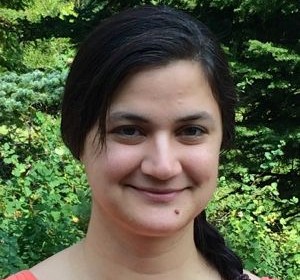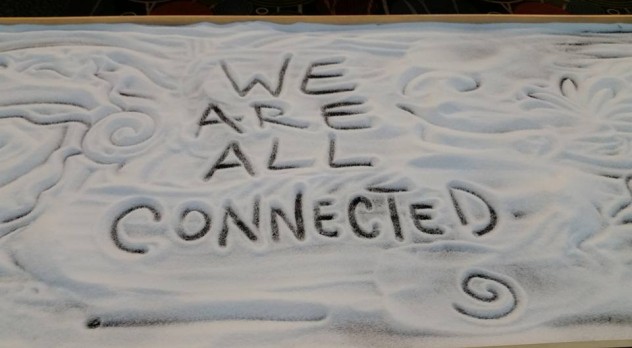
Our director of Faith Development, Rebecca Malke, had the opportunity to spend several days at the Parliament of World Religions in Salt Lake City last month. This gathering of some 9,500 people from all over the world brought together some 50 different faith traditions. Here are some of her observations.

If you live in Dane County and want to practice your faith or want to discover a new one, you don’t have far to go. Over the years, I’ve enjoyed taking advantage of the richness of the world’s religions right here in Madison. We have a Buddhist and Hindu temple in Fitchburg just down the road from Memorial, a Sikh Gurdwara in Middleton and two blocks from my home there’s a mosque. Forty-five minutes south of Madison there’s a nature sanctuary for the Pagans and 45 minutes to the east we have a Jain temple.
Because of my years doing interfaith work and my travels abroad, I wasn’t surprised when I arrived at the Parliament of the World’s Religions to see people walking around in their native or religious dress. Seeing religious rituals being performed by Christians and Hindus was nothing new. Sikhs chanting to God in their Punjabi language was quite familiar to the point where I could almost sing along.
What did surprise me was seeing so many people taking part in religious rituals outside their own. I saw Catholic priests and Buddhist monks talking and laughing together and calling each other “brother.” I saw a Hindu man accompanied by Jain musicians sing mantras that resulted in spontaneous dancing from the audience. We were complete strangers holding hands and dancing! Because we tend to worship only within our own tradition we often forget the power of interfaith worship. I know I had forgotten that.
I learned some other things, too.
The Zoroastrian religion is alive and well. I first learned about this ancient religion back in college but thought it died out hundreds of years ago. It wasn’t until I was in India and saw their religious symbol on a wall that I realized there were still practitioners. Even then I thought it was only a handful of people. Well, the two Zoroastrian priests performing a Thanksgiving ritual along with a handful of their followers proved me wrong. I learned that despite having to flee Iran in the 7th century to settle in India, there are about 2-3.5 million Zoroastrians still practicing throughout the world. They even have their own website.
Even the strange or unknown can be moving. I attended a mystical Christian communion and healing session given by Mother Clare Watts, founder of the Order of Christ Sophia. I assumed it would be like any other communion except with people from different religions politely abstaining from taking part in the actual process choosing instead to quietly observe. I walked into the darkened room a bit late and found myself surrounded by people dressed in angel costumes with Christmas lights attached to their wings. It was a bit off-putting to say the least. I considered leaving but had walked in just as they were preparing communion so I stayed and I’m glad I did. Almost everyone got up to receive communion from complete strangers while kneeling next to complete strangers. I felt surprisingly calm…and loved. So much so that I bawled my eyes out once I returned to my seat. I can’t remember ever doing that, ever.
Sikhs are the coolest people in the world. I mean it, they just are. They were by far the biggest hit at the Parliament. Not only did they offer a free lunch known as a Langar or open kitchen to everyone every day, they also gave away free steel bracelets, known as a Kara. The Kara is one of the 5 sacred symbols of the Sikh faith along with the Kanga (comb), Kes (uncut hair), Kirpan or sword and the Kachera or soldier shorts worn as an undergarment. And if that wasn’t enough, they also gave people their very own turban. People stood in lines to have elderly Sikh men teach them how to wrap a turban and then leave with the brightly colored orange or blue cloth on their head. By the end, just about everyone was a Sikh.
Big name speakers are people, too. While standing in line at a booth to receive some healing from a Hindu woman, I started up a conversation with the person behind me whose nametag read, “Grandmother Mary”. Overhearing her conversation with her friends led me to believe she was well-known, but I hadn’t heard of her. I told her I liked her cowboy boots and we began a fun conversation about rummage sales, Goodwill shopping and Ralph Lauren. Later, I discovered she was one of the presenters and through her website read that she is amongst other things, an Indian Child Welfare Act Expert Witness, Native American Family and Child Advocate for the Tribes, and a United Nations delegate. I can add that she’s also a great bargain hunter.
Many of today’s religions have a rule similar to our Golden Rule. We all want to do unto others as we would want done unto us. It also means we all want to work together for the greater good of humanity. Social justice is another common thread woven into our human tapestry of faith. Representatives of many of the major world’s religions gathered together to talk about climate change, race, gender equality and LGBTQ rights. They also talked about the need to empower our youth to make a difference in the world. When a young woman asked for advice on social justice work Rev. Joan Brown Campbell, an early supporter of the civil rights movement who worked with Martin Luther King Jr. replied, “My father told me to dare to be a Daniel. Dare to make it known” referring to Daniel in the Bible. She went on to say, “If someone says to you, you might not want to get into that, think about it because it could be something you want to get into.” 
